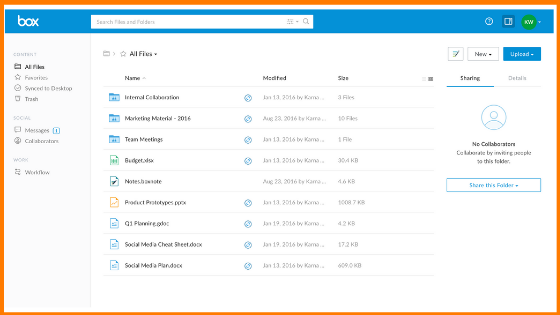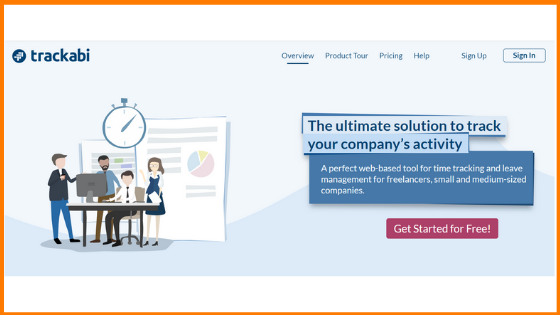Business communication has evolved over the years. Today, companies are replacing their conventional phone systems with modern communication technology known as Voice over Internet Protocol (VoIP). A VoIP (Voice over Internet Protocol) phone system is an internet-based telephony system that delivers voice calls, video calls, and multimedia using internet connectivity.
Unlike analog phone systems, VoIP phone systems do not require any dedicated phone hardware. It allows the user to call any landline, mobile or even computer-to-computer with an internet-connected laptop, PC, mobile or tablet. Being a cloud-based technology, VoIP has revolutionized the communication infrastructure across all business sectors. It easily integrates chats, syncs applications, and provides real-time call data and analytics; thus enhancing organizational productivity. In short, the emergence of VoIP has changed the name and face of business communication.
Top Telephony Service Providers
Here, we have covered some of the top telephony service providers that can help your business. So, let’s dive in.
AVOXI Genius
Telephony software, also known as Voice over Internet Protocol (VoIP) uses internet-enabled devices to make and receive phone calls. With AVOXI, your VoIP number setup is fast and easy. There are no setup fees or minimum contracts. Every VoIP number includes 20+ features at no additional cost. Get your virtual phone number today for as low as $4.49 per month.

Avoxi Core Cloud PBX is a voice technology system that enables use of legacy systems while decreasing hardware investment and maintenance. The cloud-based system serves the following industries: energy, finance, hospitality, insurance, manufacturing, media and entertainment, nonprofit, retail and transportation. Multiple gateways can accommodate an increase in the number of phone lines as businesses grow. Customer features include a 24/7 support team and password protected access to a secure web where users can view all call detail records.
Also read:
CloudTalk
CloudTalk is a telephony system built for modern companies. CloudTalk simplifies the lives of your sales and customer support teams with 70+ advanced calling features. Improve communication with prospects thanks to the integration with your existing helpdesk, CRM and eCommerce systems as Helpscout, Pipedrive or Shopify.

CloudTalk is a fully featured Call Center Software designed to serve Agencies, SMEs. CloudTalk provides end-to-end solutions designed for Macintosh. This online Call Center system offers Queue Management, Predictive Dialer, Call Recording, Contact Management, VoIP at one place.
Price: CloudTalk pricing starts at $15.00 per month, per user. There is not a free version of CloudTalk.
Aircall
Aircall is the cloud-based phone system of choice for modern brands of 3+ users. By seamlessly integrating with the most popular CRM and Helpdesk tools, they help sales and support teams communicate clearly and efficiently. Admins can instantly add numbers from 100+ countries, scale their teams according to seasonality, and gain deep insights through real time analytics. Accessible by desktop and mobile app, Aircall is trusted by over 3000 companies worldwide. Aircall is the modern phone solution for sales and support teams.

It is very user friendly and easy to use and setup and integrate with other software, web apps and services when building and testing a UC – Unified Communications Contact Center or OmniChannel.
Price: Essentials Plan – $30/user per month, billed annually and Professional Plan – $50/user per month, billed annually. Free Trial available.
Freshcaller
Freshcaller is a cloud PBX system that enables you to purchase local and toll-free phone numbers in 90+ countries. Engage in contextual conversations with your callers without any hardware nor maintenance costs. Freshcaller is the ideal call center and business phone system for startups and small teams. With Freshcaller businesses can choose to record all their phone conversations and allow supervisors access to live dashboards and even listen and speak to customers in real-time.

As a phone system designed for teams with little/no IT support, Freshcaller allows users to create a new account in minutes and configure rules, business hours, and routing processes that are executed in real-time. Freshcaller enables businesses to scale their usage effortlessly by adding agent licenses, purchasing additional numbers or phone credits, and changing their pricing plan at any time.
Price: Freshcaller pricing starts at $19.00 per month, per user. There is a free version of Freshcaller available.
Must read:
Jive Voice

Give your business a professional boost with Jive Voice. A cloud-based, feature-rich business phone system, Jive helps thousands of organizations across all industries and sizes to streamline their communications and achieve greater success. Jive Hosted VoIP offers a wide array of features designed to replace legacy landline phones, including unlimited voicemail boxes, auto attendants, and local and long-distance phone numbers.
Starting Price: $19.95/month/user (Free Trial available).
MyOperator
MyOperator is a cloud-based business phone system providing solutions like virtual phone numbers (toll free/non-tollfree), IVR, call management features like call tracking, call recording, live call transfer, callers’ database, virtual receptionist and more. It extends the reach of your business 24*7 and routes calls to the right departments for a faster point resolution. It doesn’t require any hardware or software installation. This thereby helps save installation and additional infrastructural costs required while scaling up.

Also, it allows you to work anywhere and anytime. All your phone calls, be it the ones you made, received or missed are tracked. This not only helps you upgrade your customers’ experience but also ensures that no prospect is lost. Facebook and SMS remarketing are the ways that MyOperator offers to help you reconnect with your callers and repeat purchase.
Price: There are 3 plans available – Office IVR System (Rs. 2,300/month), Cloud Call Center – Desk (Rs. 5,000/month), and Cloud Call Center – Prime (Rs. 20,000/month).
Flowroute
Flowroute, the first software-centric carrier, provides communication services and technology for cloud-based platforms. By providing businesses with programmatic access to communications infrastructure services, Flowroute removes the complexity of introducing new communications solutions to the market.

The patented nationwide Flowroute HyperNetwork delivers leading carrier-quality calling and messaging services with unparalleled reliability, reach, and simplicity. Flowroute is a fully featured VOIP Software designed to serve Agencies, Startups. Flowroute provides end-to-end solutions designed for Web App. This online VOIP system offers SIP Trunking at one place.
Price: Flowroute is a pay as you go SIP Trunking service. There is not a free version of Flowroute. Flowroute does not offer a free trial.
Relevant read:
JustCall
JustCall is a cloud-based phone system that allows businesses to collect phone numbers from 58 countries and make them appear as local digits to their clients. JustCall gives you the platform you need to manage your international customers in a unified location, communicate with them with a simple and straightforward solution.

JustCall is a cloud phone system that integrates with your CRM or Helpdesk. Make, receive and log all your phone calls and texts directly from your CRM/Helpdesk dashboard. Using different call distribution settings, you will never miss a customer support call ever. Give easy ways to your customers to reach relevant departments, allow them to remain in queue while waiting for an agent to come on the call or even give them an option to leave voicemails. Apart from basic contact center software solution, JustCall also provides other useful tools like Bulk SMS Campaigns, SMS Bots, Auto Dialer, Predictive Dialer, Dynamic Number Insertion etc.
Price: There are two plans – Standard ($25/user/month) and Premium ($50/user/month).
Conclusion
Telephony Software includes many telecommunication features, from recording calls to creating a complete call center environment. Selecting the best software depends on your needs but the above list can serve as a reference. The software works as a fully featured telephone switch connecting to phone lines and extensions using state-of-the-art virtual PBX and VoIP technology. If you know about any other tool, please let us know in the comments section below.




















































